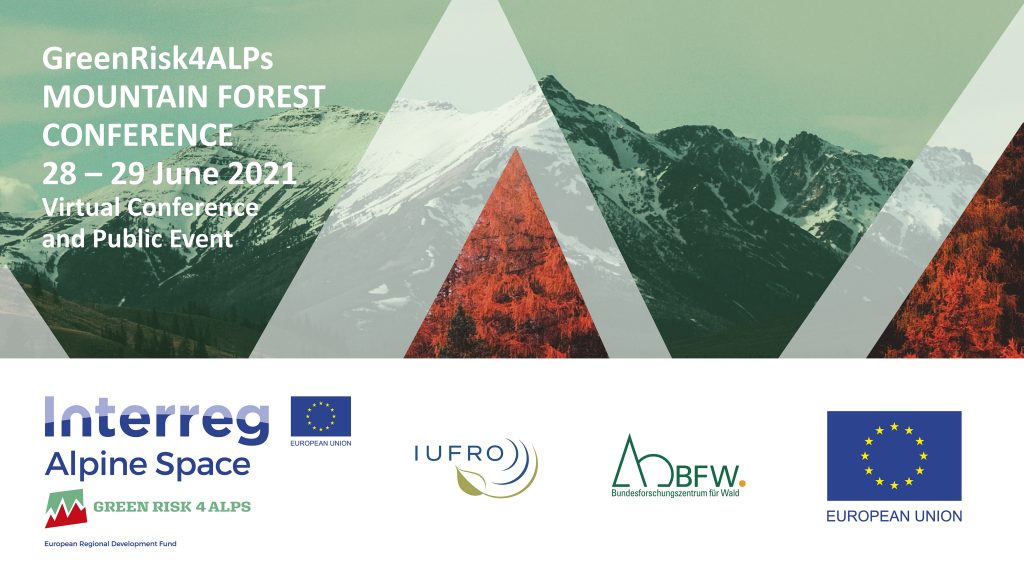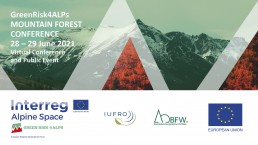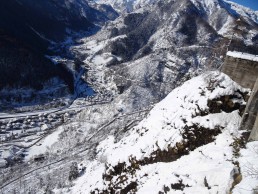Trans-Alp partners BFW and Eurac Research invite you to the “GreenRisk4ALPs Mountain Forest Conference”, which will be held online on June 28 and 29, 2021!
The Interreg Alpine Space project GreenRisk4ALPs is supporting risk-based protective forest management as part of an integral and ecosystem-based natural hazard risk management in the Alpine Space. After three years of fruitful scientific collaborations and continuous exchange with practice and policy, we would like to share our insights and developed decision support tools with you and invite you to discuss and connect to move forward together at managing our mountain forests sustainably as an effective protection measure against natural hazards. Participation in the GreenRisk4ALPs Mountain Forest Conference is free of charge and open to everyone.
Please find out more at: https://www.alpine-space.eu/projects/greenrisk4alps/en/home
We are looking forward to welcoming and meeting you virtually in June!

Agordino, Cordevole Valley - the extreme weather events that hit the study area in the last 20 years have been selected.
Thanks to data recorded by ARPAV telemetry network, it is clear how the alpine area in Veneto region has been seriously hit in the last few years by several intense weather events. The events were characterized by strong wind gusts, intense rainfall and heavy snowfall. ARPAV has identified in its archives a series of weather events, with the aim of comparing the frailty of the territories selected as case study, in association with the other partners. The selected events refer to the last 20 years and have caused damage to infrastructures, buildings and forests, besides the endangerment of population, in Agordino, one of studied areas of the TRANS-ALP project.
30 weather events were selected, starting from 2002. In most of the cases the reported damages are related to heavy precipitations causing landslides, both localized or widespread over the area. Further damages related to the presence of strong wind gusts have been related to approximately ten weather events: the outcomes were mostly minor damages to trees, with few cases of damages to buildings and possibly torn roofs. The “VAIA” event has possibly been the most infamous event for the consequences of wind, razing to the ground large portions of forest and with the subsequent creation of several new avalanche sites.
ARPAV next step will be the detailed characterization of the selected weather events, in terms of precipitations and wind gusts. This phase needs to be studied in collaboration with the cross-border partners, in order to identify the key elements to forecast the effects on the territory and create a shared and coherent approach from both sides of the alpine arch.





